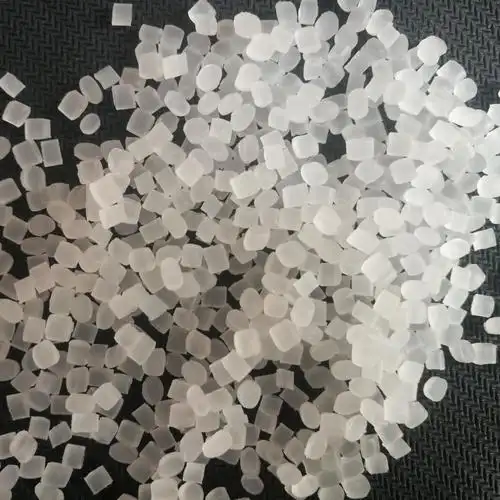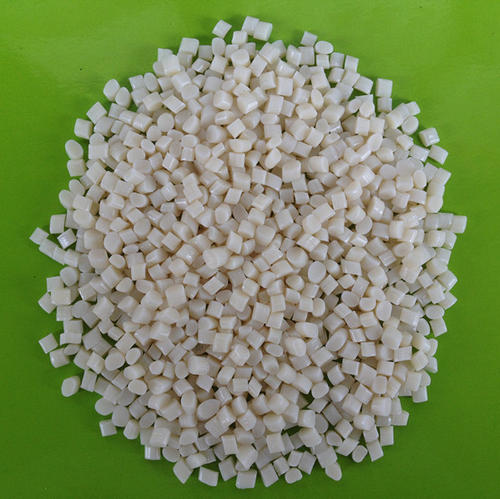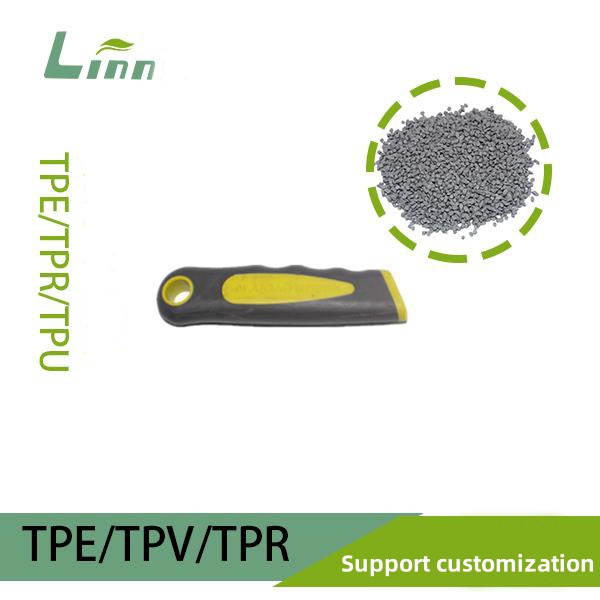In the realm of polymer materials, the pursuit of sustainability and environmental responsibility has become increasingly prominent. As someone who has been deeply involved in the polymer industry for numerous years, I’ve witnessed firsthand the transformative power of recycling and the growing demand for recycled materials. Today, I want to delve into the world of recycled TPE (Thermoplastic Elastomer) elastomer materials, exploring the different types available, their characteristics, applications, and the challenges and opportunities they present.
Understanding Recycled TPE Elastomers
Before diving into the specific types, it’s crucial to understand what recycled TPE elastomers are and why they matter. TPEs are a class of copolymers or physical blends of polymers that exhibit both thermoplastic and elastomeric properties. They are known for their flexibility, resilience, and ease of processing, making them widely used in various industries.
Recycled TPE elastomers, on the other hand, are TPE materials that have been reclaimed from post-consumer or post-industrial waste, processed, and reintroduced into the manufacturing cycle. The use of recycled TPEs not only helps reduce waste and conserve resources but also contributes to a more circular economy.

Types of Recycled TPE Elastomer Materials
Now, let’s explore the different types of recycled TPE elastomer materials available on the market.
1. Post-Consumer Recycled TPE (PCR TPE)
Source and Processing:
PCR TPE is derived from consumer waste, such as discarded toys, household items, and packaging materials. The recycling process involves collecting, sorting, shredding, and then reprocessing the waste into usable TPE pellets.
Characteristics:
Variable Quality: Due to the diverse sources of consumer waste, the quality of PCR TPE can vary significantly. It may contain impurities, inconsistent color, or varying mechanical properties.
Cost-Effective: Despite the variability in quality, PCR TPE is often more cost-effective than virgin TPE, making it an attractive option for budget-conscious manufacturers.
Environmental Benefits: Using PCR TPE helps reduce the amount of waste sent to landfills and lowers the carbon footprint associated with new material production.
Applications:
Non-critical Consumer Goods: Such as garden hoses, outdoor furniture, and low-cost toys.
Packaging Materials: Like reusable containers, trays, and blisters.
Considerations:
Quality Control: Manufacturers need to implement strict quality control measures to ensure the consistency and performance of PCR TPE in their products.
Color Matching: Achieving consistent color can be challenging with PCR TPE due to the variability in the source materials.

2. Post-Industrial Recycled TPE (PIR TPE)
Source and Processing:
PIR TPE comes from industrial waste, such as scrap materials generated during the manufacturing process of TPE products. This waste is typically more homogeneous and easier to recycle compared to consumer waste.
Characteristics:
Higher Quality: PIR TPE often exhibits better mechanical properties, color consistency, and overall quality compared to PCR TPE due to the more controlled source materials.
Reduced Waste: By recycling industrial waste, manufacturers can significantly reduce their waste generation and associated costs.
Sustainability: Using PIR TPE aligns with corporate sustainability goals and can enhance a company’s environmental reputation.
Applications:
Automotive Components: Such as interior trim, seals, and gaskets.
Electronic Enclosures: Like computer cases, mobile phone shells, and TV bezels.
Medical Devices: In certain non-critical applications, where regulatory compliance allows for the use of recycled materials.
Considerations:
Supply Chain Management: Ensuring a steady supply of PIR TPE requires close collaboration with suppliers and efficient waste management practices.
Regulatory Compliance: Depending on the application, manufacturers may need to ensure that the recycled TPE meets specific regulatory standards.

3. Mechanically Recycled TPE
Source and Processing:
Mechanically recycled TPE involves the physical reprocessing of TPE waste without significant chemical changes. The waste is shredded, melted, and then extruded into pellets for reuse.
Characteristics:
Simplicity: The mechanical recycling process is relatively straightforward and does not require complex chemical treatments.
Cost-Effective: Similar to PCR and PIR TPE, mechanically recycled TPE can be a cost-effective alternative to virgin TPE.
Limited Performance Improvement: Mechanical recycling does not typically enhance the mechanical properties of the TPE; it mainly serves to reintroduce the material into the manufacturing cycle.
Applications:
General-Purpose Products: Such as handles, grips, and non-load-bearing components.
Temporary or Disposable Items: Like event signage, promotional items, and single-use packaging.
Considerations:
Degradation: Repeated mechanical recycling can lead to some degradation of the TPE’s properties over time.
Material Identification: Ensuring that the recycled TPE is compatible with the intended application requires careful material identification and testing.

4. Chemically Recycled TPE
Source and Processing:
Chemically recycled TPE involves breaking down the TPE waste into its constituent monomers or oligomers through chemical reactions. These monomers or oligomers can then be repolymerized into new TPE materials.
Characteristics:
High Purity: Chemical recycling can produce TPE materials with high purity and consistent properties, similar to virgin TPE.
Potential for Property Enhancement: Depending on the recycling process, it may be possible to enhance certain properties of the TPE, such as its heat resistance or flexibility.
Energy-Intensive: Chemical recycling processes often require more energy and resources compared to mechanical recycling.
Applications:
High-Performance Products: Such as automotive parts requiring high durability and temperature resistance.
Medical and Pharmaceutical Applications: Where high purity and consistent performance are critical.
Considerations:
Cost: Chemical recycling is typically more expensive than mechanical recycling due to the complex processes involved.
Scalability: The scalability of chemical recycling technologies is still a challenge, and widespread adoption may require further technological advancements.

5. Blends of Recycled TPE with Other Materials
Source and Processing:
Recycled TPE can also be blended with other materials, such as virgin TPE, other polymers, or fillers, to create materials with tailored properties. The blending process involves physically mixing the components and then processing them into a usable form.
Characteristics:
Customizable Properties: Blending allows for the adjustment of mechanical, thermal, and chemical properties to meet specific application requirements.
Cost Optimization: By blending recycled TPE with other materials, manufacturers can optimize costs while still achieving the desired performance.
Innovation Opportunities: Blending opens up new possibilities for material innovation and the development of novel products.
Applications:
Customized Consumer Goods: Such as sports equipment, footwear, and fashion accessories.
Industrial Components: Like seals, gaskets, and vibration dampeners.
Considerations:
Compatibility: Ensuring compatibility between the recycled TPE and other components in the blend is crucial for achieving good mechanical properties and performance.
Processing Challenges: Blending may introduce additional processing challenges, such as phase separation or poor adhesion between components.

Challenges and Opportunities in Recycled TPE Elastomers
While recycled TPE elastomers offer numerous benefits, they also present several challenges that need to be addressed:
1. Quality Consistency
Challenge:
The quality of recycled TPE can vary significantly depending on the source materials and recycling process. This variability can make it difficult for manufacturers to ensure consistent performance in their products.
Opportunity:
Advancements in recycling technologies and quality control measures can help improve the consistency of recycled TPE. Additionally, the development of standardized testing methods and certification programs can provide manufacturers with greater confidence in the quality of recycled materials.
2. Regulatory Compliance
Challenge:
Depending on the application, recycled TPE may need to meet specific regulatory standards, such as those related to food contact, medical devices, or automotive safety. Ensuring compliance with these regulations can be challenging, especially when dealing with recycled materials.
Opportunity:
Collaboration between industry stakeholders, regulatory bodies, and research institutions can help establish clear guidelines and standards for the use of recycled TPE in various applications. This can facilitate the adoption of recycled materials and promote a more sustainable industry.

3. Market Acceptance
Challenge:
Despite the environmental benefits of recycled TPE, some consumers and manufacturers may still be hesitant to adopt these materials due to concerns about quality, performance, or aesthetics.
Opportunity:
Education and awareness campaigns can help raise awareness about the benefits of recycled TPE and dispel any misconceptions. Additionally, showcasing successful case studies and highlighting the cost savings and environmental advantages of using recycled materials can encourage wider adoption.
4. Technological Innovation
Challenge:
The recycling of TPE materials is still a relatively new and evolving field. There is a need for continued technological innovation to improve the efficiency, cost-effectiveness, and environmental impact of recycling processes.
Opportunity:
Investment in research and development can lead to the development of new recycling technologies, such as advanced sorting and separation techniques, more efficient chemical recycling processes, and the use of artificial intelligence and machine learning to optimize recycling operations.

Future Outlook for Recycled TPE Elastomers
Looking ahead, the future of recycled TPE elastomers looks promising. As the demand for sustainable materials continues to grow, the recycling of TPE waste will become increasingly important. Here are some key trends and developments to watch for:
1. Increased Adoption in High-Performance Applications
With advancements in recycling technologies and quality control measures, recycled TPE is likely to find wider adoption in high-performance applications, such as automotive, medical, and aerospace industries.
2. Development of New Blends and Composites
The blending of recycled TPE with other materials, such as natural fibers, biopolymers, or nanomaterials, will open up new possibilities for material innovation and the development of novel products with enhanced properties.
3. Circular Economy Initiatives
The push towards a more circular economy will drive the development of closed-loop recycling systems, where TPE waste is collected, recycled, and reintroduced into the manufacturing cycle with minimal loss of material value.
4. Regulatory Support and Incentives
Governments and regulatory bodies are likely to introduce more supportive policies and incentives to encourage the use of recycled materials, including recycled TPE. This could include tax breaks, grants, or preferential procurement policies for companies that use recycled materials in their products.
Conclusion
Recycled TPE elastomer materials offer a sustainable and cost-effective alternative to virgin TPE, with applications spanning various industries. From post-consumer and post-industrial recycling to mechanical and chemical recycling, there are multiple paths to reintroducing TPE waste into the manufacturing cycle. While challenges such as quality consistency, regulatory compliance, and market acceptance remain, there are also numerous opportunities for innovation and growth.
As the polymer industry continues to evolve, the adoption of recycled TPE elastomers will play a crucial role in promoting sustainability, reducing waste, and conserving resources. Whether you’re a manufacturer looking to optimize your supply chain, a designer seeking to create innovative products, or a consumer passionate about environmental responsibility, recycled TPE elastomers offer a compelling solution.

Related Questions and Answers
Q1: Can recycled TPE be used in food contact applications?
A1: The use of recycled TPE in food contact applications depends on several factors, including the source materials, recycling process, and regulatory compliance. In general, it’s essential to ensure that the recycled TPE meets specific food contact regulations and undergoes rigorous testing to verify its safety. Some recycled TPE materials may be suitable for non-critical food contact applications, but it’s crucial to consult with regulatory bodies and experts to ensure compliance.
Q2: How does the performance of recycled TPE compare to virgin TPE?
A2: The performance of recycled TPE can vary depending on the source materials, recycling process, and any blending or modifications made. In some cases, recycled TPE may exhibit similar or even improved properties compared to virgin TPE, especially when advanced recycling technologies are used. However, in other cases, there may be some degradation in properties, such as reduced mechanical strength or heat resistance. It’s essential to conduct thorough testing and evaluation to determine the suitability of recycled TPE for a specific application.
Q3: What are the environmental benefits of using recycled TPE?
A3: Using recycled TPE offers several environmental benefits, including reduced waste sent to landfills, conservation of natural resources, lower energy consumption compared to new material production, and reduced greenhouse gas emissions. Additionally, the adoption of recycled TPE contributes to a more circular economy, where materials are reused and recycled rather than discarded after a single use.
Q4: How can I ensure the quality of recycled TPE for my application?
A4: To ensure the quality of recycled TPE for your application, it’s essential to work with reputable suppliers who have robust quality control measures in place. Request detailed information about the source materials, recycling process, and any testing or certification that the recycled TPE has undergone. Additionally, conduct your own testing and evaluation to verify the performance and compatibility of the recycled TPE with your specific application requirements.





